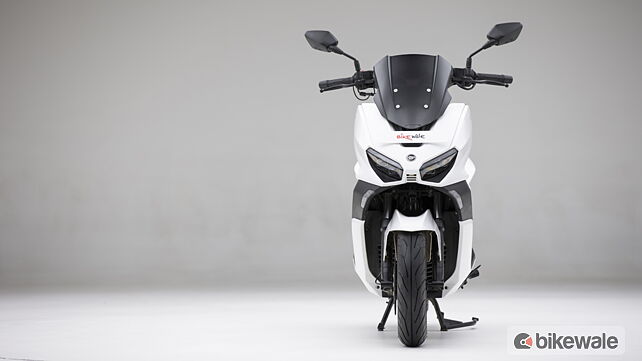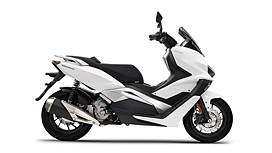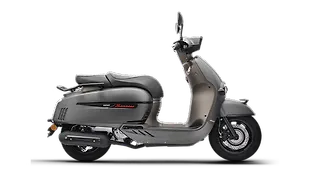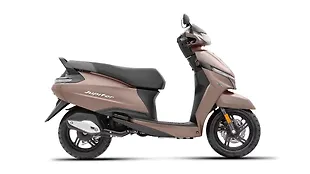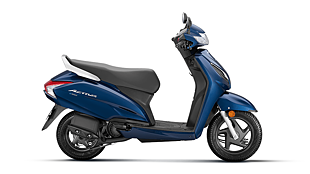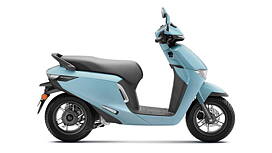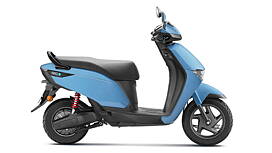Introduction

Why to buy it?
- Visual appeal
- Brisk acceleration
- Good low-speed handling
Why to avoid it?
- Lack of storage space
- Stiff ride quality
- Exorbitant price tag
India is the world’s largest two-wheeler market and offers a lucrative playground to manufacturers of almost every stature and domain. Hence, a foreign brand entering the Indian shores and trying to make a mark here is a common sight. One such foreign brand is Keeway, which originated in Hungary but is now owned by the Chinese giant, Qianjiang, which also owns Benelli. For its India operations, Keeway has partnered with Adishwar Auto Ride India.

Keeway has started its India innings with three products, one of which you can see in these pictures. This is the Vieste 300 and its design and displacement suggest that it’s a true-blue maxi-scooter. However, for a scooter to earn that badge, it needs to be proficient on many fronts like high-speed stability, handling, ergonomics, ride quality, engine performance, and storage space. So, does the Vieste 300 have all that’s needed to be a quintessential maxi-scooter? Let’s find out.
Styling and Quality

The Vieste 300 is one handsome-looking thing, whichever angle you look at it from. On multiple occasions, I found myself staring at its sharp lines and neat contours. While it exudes the relaxed demeanour of a typical maxi-scooter, there’s no dearth of sporty elements either. The front, in particular, looks aggressive with a pair of small yet imposing headlamps which are nestled within a wide and muscular apron crowned by a tall windscreen. The mid-section is attractively busy with a centre spine flanked by multi-coloured panels and a long footrest while the tail section seamlessly blends with the overall design.

The build quality and fit and finish are as pleasant as its aesthetics. It’s put together really well and we couldn’t spot any uneven panel gaps, shoddy welds, or sub-standard paint job. We didn’t hear any strange noises emanating from the scooter, even after a few days of rigorous usage. However, the switchgear could do with better tactility and the boot opening button needs to be much more sensitive to your inputs – it requires a very hard press to operate.
Ergonomics and Comfort

Straddling the Vieste isn’t as easy as a conventional scooter, courtesy of the centre spine. You either have to swing your leg over the spine or the seat, as you do on a motorcycle. But once you’re in the saddle, the Vieste feels quite easy to lift off the stand and push around, although its 147kg (kerb) weight suggests otherwise.

The riding posture it offers felt nice and comfortable initially. You sit upright holding the pulled-back handlebar, with your feet outstretched on the long footboard, or in a conventional position. But after a couple of hours on the saddle, I realized I couldn’t move back because of the tiny hump in the middle of the seat. Also, when you keep your legs at the back, in a more traditional scooter-like riding stance, your heels are angled outwards due to the bulk at the rear section of the centre spine, under the seat. Moreover, had the handlebar been placed higher and farther, it would have made for a more relaxed maxi-scooter-like riding position, especially for someone as tall as me at 5’11’’.

Now, the ergonomics of the Vieste don’t pose as big a problem as its suspension. It gets telescopic forks up front and dual shock absorbers at the back and this is a rather stiffly sprung setup, especially the rear. Every time you go over a set of small rumblers, shallow potholes, or sharp road joints, the Vieste bounces and transfers the shock to your back. And the slower you try to cross these hurdles, the worse it feels. For instance, I went through a closely-spaced set of three rumblers at 15-20kmph and the scooter relentlessly bounced its way. Then, I tried taking the same course at nearly 35kmph and the shock wasn’t as intense.
However, being fast doesn’t work while going over high-amplitude, rounded bumps as you get thrown off the seat due to the fast rebound. On the positive side, the Vieste felt quite planted on the highway even at speeds of about 80-90kmph and minor undulations never made it unstable.
Performance and Handling

Propelling the Vieste is a 278.2cc, liquid-cooled, four-valve engine which is mated to a CVT gearbox via a belt-drive system. This unit churns out 18.4bhp at 6,500rpm and 22Nm of torque at 6,000rpm. Interestingly, the motor performs as impressively as these numbers suggest. As you crank up the engine, it settles into a vibey idle that keeps shaking the mirror and handlebar until you get going. And when you roll on the throttle, the Vieste darts ahead with vigour and urgency. While it’s decently quick off the line, the meat of performance truly lies between 30-70kmph which makes it a very sprightly, quick, and effortless city runabout.

The Vieste impresses on the highway as well. Cruising down a wide open road at 80-90kmph feels like a cakewalk and overtaking from those speeds isn’t a task either. On a straight and empty patch of highway, I could speed it up to 125kmph. The beauty of this motor is that it feels smooth and vibe-free throughout, except for when it’s idling. Things would have been more likeable if the throttle was a little lighter and quicker.

It handles as well as it goes. Well, in most scenarios. Now, 147kg (kerb) isn’t light for a scooter but the Vieste feels nimble and agile to manoeuvre. Flicking it through gaps in traffic is a quick affair, mainly due to the prompt steering response. You just need to be a bit wary of the long 1,390mm wheelbase. And when you’re taking on a set of twisties, it goes through the tighter corners with good stability and precision. However, come a long sweeping bend and you try attacking it fast and the Vieste feels odd and unstable. The front and rear feel a bit disconnected and even small surface imperfection unsettles it.

Adding to the gripe is the lack of grip from the tyres. While these Timsun rubbers feel decent on dry tarmac, they lack wet grip severely and keep sliding around through corners even at minimal lean angles. So, it’s advisable to be sane while riding it in the rain. In a nutshell, you can enjoy the Vieste in twisties, but can’t really go gung-ho.
As for the brakes, the scooter had barely done 400km when I received it and the front had already faded. The lever had no feel and the needed bite came in too late. Maybe it was an issue with this particular unit. The rear brake, meanwhile, worked extremely well with impressive bite and adequate progression.
Features and Technology

The Vieste 300 gets a keyless ignition system which is a treat to use. Just keep the fob in your pocket, and the rotary switch below the handlebar does the job of turning on the engine and locking the handlebar. Below this switch are two buttons for operating the boot and fuel lid. The latter is placed on the centre spine which makes fueling the scooter quite convenient.

As for the boot, it’s not as useful as you expect of a maxi-scooter. Although the surface area is larger, there isn’t enough depth to store a full-blown half-face helmet, forget storing a full-face lid. Only the locally-made open-face lids with a smaller shell and visor can be stuffed in, which is a bummer. There’s a glove box at the front and that too has a very small opening – you can slide in your smartphone, charger, or your wallet at best.

The instrument cluster is a wide motorcycle-like semi-digital unit. While it looks really attractive, it packs some unnecessary data like an analogue tachometer, which has no use in a scooter, and two speedometers – one analogue and one digital. Why? Nevertheless, there is other useful stuff like a clock, temperature indicator, odometer, trip meter, and a few tell-tale lights. You also get a USB charger, dual-channel ABS, and heated grips.

Mind you, there’s no Bluetooth connectivity or navigation, things that are available in much cheaper scooters these days. Also, given the performance it packs, multiple riding modes would have been welcome, especially by newer riders who could do with a mode offering dialled-down engine performance. And since maxi-scooters are also used for touring, an option to lift the windscreen would have made sense. In its current position, the windscreen offers close to no protection from wind buffeting at high speeds.
Fuel Efficiency

In our real-world mileage test, the Vieste 300 returned an average of 29.5kmpl which is respectable considering its displacement and performance. And it has a large 12-litre fuel tank too! That translates to a full-tank range of 354km.
Should you buy it?

The Keeway Vieste 300 has its good and bad traits, with the latter being more conspicuous than the former. The positives include gallops of road presence, good build quality, potent engine performance, agile low-speed handling, a large fuel tank, and great straight-line stability. Now, where it could improve is in terms of tyres, features, ergonomics, wind buffeting, and high-speed handling. While one could live with these issues, the more serious shortcomings are the stiff ride quality and lack of storage space. And these are factors which a premium maxi-scooter scooter buyer wouldn’t or shouldn’t compromise on. Especially someone who is shelling out around Rs 3.80 lakh (on-road, Mumbai), which in itself is an exorbitant price tag, particularly for a product as unfinished as this.
Photography by Kaustubh Gandhi
Gallery
1/104
Keeway Vieste 300 Front View
Double Tap to Zoom











